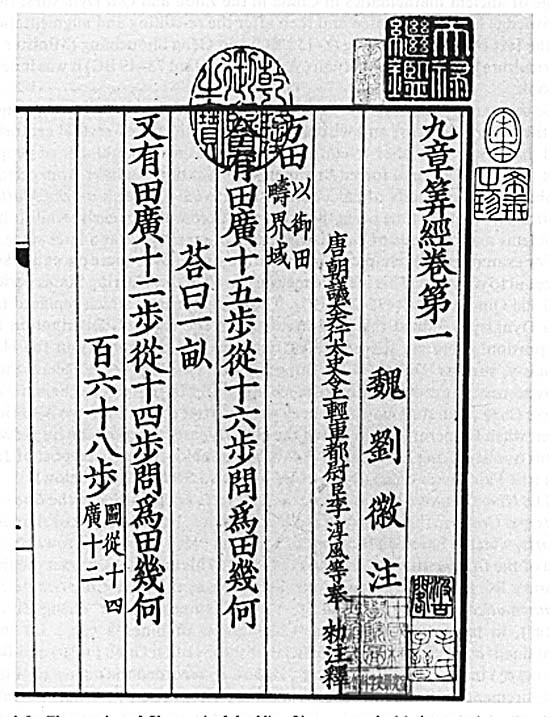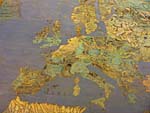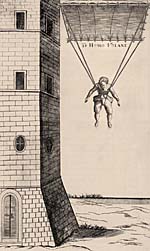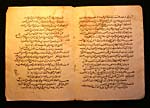
Unit 2: How Trade and Travel Changed the World
Lesson F: Renaissance and Reformation
Activity 2: The Classical Roots of the Renaissance
Use the following graphic organizer to record notes about the Classical Period origins of the Renaissance.
![]()
Download the Student Resource: The Classical Roots of the Renaissance Graphic Organizer (doc).
Classical Greece and Rome were both Mediterranean civilizations that thrived based on their political and economic structures. Their stability enabled merchants and artisans to produce and transport products throughout the region, and make contacts through trade routes to the Middle East and Asia. Stability, economic growth, and interactions led to the great accomplishments of these civilizations.
The Renaissance revived the classical focus on human beings and daily life, as well as the debate over scientific and social ideas. Renaissance scholars called this humanism. Many argued this was also the start of a more secular view of the European world. Humanism challenged the scholastic approach to learning by looking at original texts and debating philosophical views.
The map to the right shows the politically stable states of the Renaissance in the light blue shading, where cultural revival was prominent.
Literature
Classical Greece and Rome were also known for their accomplishments in philosophy more than one thousand years before the Renaissance of the 14th through 17th centuries. Classical literature was rediscovered, sometimes literally, in university and monastic libraries.
Weakening of Religion
War between Europeans and with neighboring enemies in the Ottoman Empire created instability that weakened government control over society. This made a break with traditional church-led education possible.
Regional Renaissances
Historians organize the Renaissance according to events in specific regions and states, such as Italy, England and France, Spain, and northern Europe. Italian artists tried to portray the glory of ancient Rome optimistically, while British writers aimed to relive the rise of European monarchs. Renewed attention to the classic language of Latin reflected attempts to awaken the ancient literary accomplishments of Greece and Rome.
The Renaissance was also a shift in the mindset of many Europeans who took advantage of the opportunity to think freely about the world around them and challenge limitations to human ingenuity.
Technology and Architecture
Technological advances in areas such as architecture were also the aim of many Renaissance artists. Roman and Han architecture received renewed attention in the form of columned buildings and paved roads. The grandiose structures once reserved for churches now adorned European cities in the form of libraries and universities.
Han works on mathematics also provided the Renaissance world with a basis for the study of more advanced use of equations and positive and negative numbers. Seen below is a page from "The Nine Chapters on the Mathematical Art", one of the most influential Chinese works in the field of math.

Page from The Nine Chapters on the Mathematical Art [3]
Global Influences
Advances in astronomy and mathematics by Muslim scholars in the Middle East also provided a foundation for Renaissance developments. The "Golden Age" of Islamic thought came during the rule of the Abbasid Caliphate of the 8th – 13th centuries, when Muslim scholars also explored humanistic thought in their study of the physical world. This use of rational, observable traits created a foundation for later humanists. Arab scholars also promoted the use of paper to record and transmit ideas in universities, a tool first perfected by Chinese innovators.
Written Activity - Notebook
In your notebook, respond to the following questions:
- What significant developments of the Classical Period served as the basis for Renaissance accomplishments?
- How does this help explain the use of the title "classic" to describe the Classical Period?
Now that you have learned about the Classical foundations of Renaissance ideas, the next activity will give more specific examples of art that clearly reflect the cultural changes of the time.
Page Notes:
[1] Source: This image from http://commons.wikimedia.org/wiki/File:Caprarola_Fresco_Geo.jpg is licensed under the terms of the GNU License Agreement.
[2] Source: This image from http://en.wikipedia.org/wiki/File:Homo_Volans.jpg is in the public domain.
[3] Source: This image from http://en.wikipedia.org/wiki/File:%E4%B9%9D%E7%AB%A0%E7%AE%97%E8%A1%93.gif is in the public domain because its copyright has expired.
[4] Source: This image from http://en.wikipedia.org/wiki/File:ManuscriptAbbasid.jpg is licensed under the terms of the GNU License Agreement.





